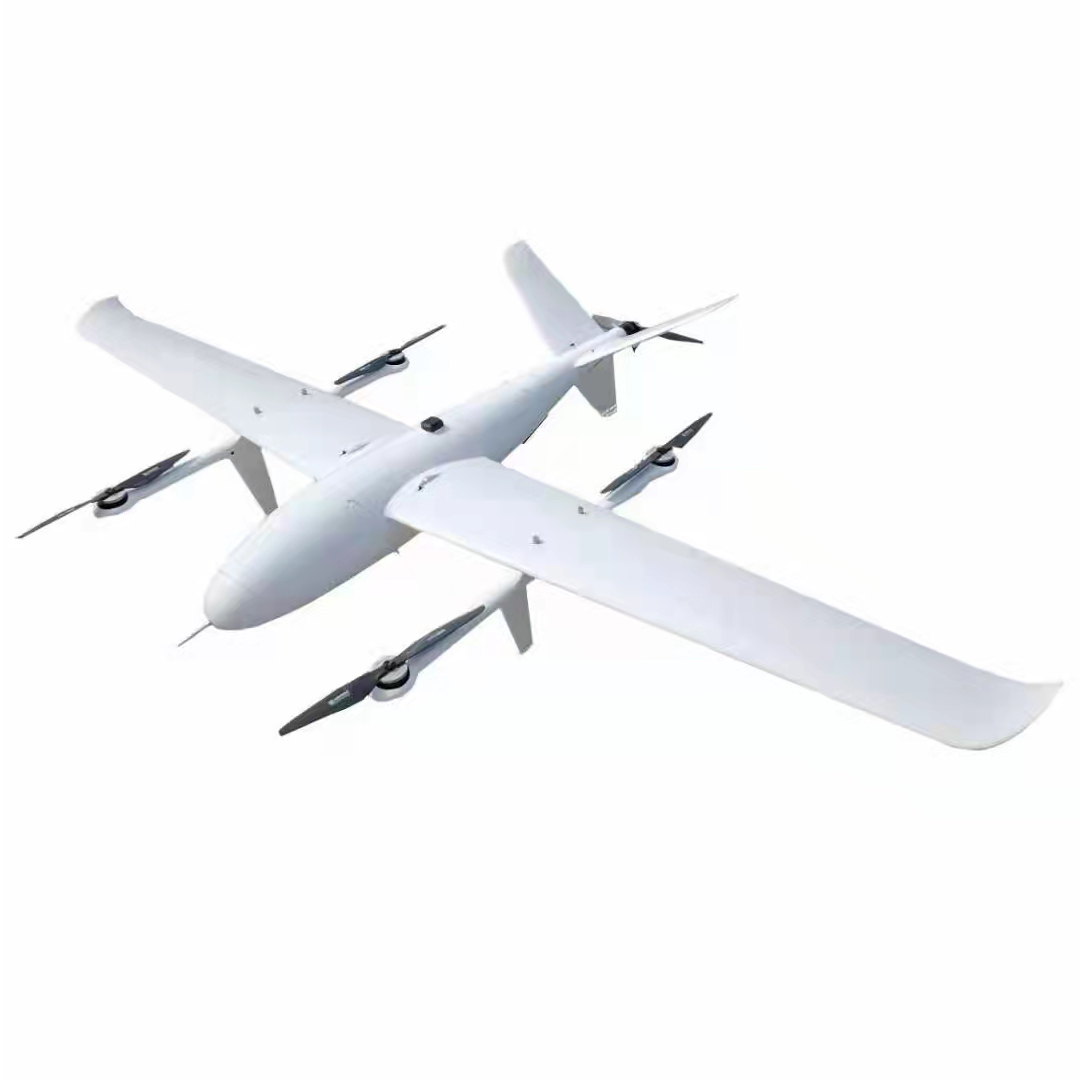
Schiebel and Andøya Space Defence have successfully tested the functions of the CAMCOPTER S-100 unmanned helicopter drone for search and rescue on the coast guard KV Nordkapp ship in Norwegian waters.
Hans Georg Schiebel, Chairman of the Schiebel Group, said: “CAMC OPTER S-100 is very suitable for offshore operations, including in the Arctic or Antarctic. It has been proven many times that it can operate at temperatures as low as -40 degrees Celsius and harsh weather conditions. Operation. We are proud to have successfully demonstrated these extraordinary capabilities to the Norwegian Coast Guard and the Navy."
FDG35 VTOL V tail with vertical take-off and landing fixed wing, wingspan 3.5 meters,it iss electric version . This model combines the characteristics of long-endurance, high-speed and long-distance of fixed-wing UAVs and the vertical take-off and landing of rotor-wing drones.
FDG35 VTOL drone is good for search, rescue and surveillance
Feature:
Easy to assemble and operate Vertical take-off and landing, without limitation of space Resistance to harsh weather conditions Diesel-electric version and electric version optional All carbon fiber composite material, industry standard architecture Compatible with PC station, suitable for open source of autopilot system.
1. Body material: carbon fiber, glass fiber, Kevlar, pvc interlayer, etc. Recommended Set-up:
4 x T-motor MN805S KV170 NOTE: THE PRICE IS JUST KIT, WITHOUT ANY ELECTRONIC, AND THE PACKING IS IN WOODEN CASE NOT IN ALUMINUM BOX!
FDG35 VTOL Drone For Rescue

VTOL V tail carry 7KGS Lidar endurance 140 minutes for surveillance
2. Body length: 1.88m
3. Wingspan: 3.5m
4. Landing gear height: 19.5cm
5. Landing gear installation position: below the rotor rod
6. Task compartment size: 350mm*318mm*200mm
7. Battery compartment size: can hold 2*32000mah at the same time
8. Position of mission compartment: directly below the center of gravity of the aircraft
9. Structure weight: about 9kg
10. Maximum take-off weight: less than 30kg
11. Maximum payload: 10kg
12. Endurance time: 140min/5kg, 70min/10kg
13. Maximum control distance: manual control by remote control/1km, ground station/standard 30km
14. Standard cruising speed: 65km/h (about 18m/s)
15. Maximum cruising speed: 108km/h (30m/s)
16. Stall speed: 23m/s
17. Minimum circling radius: 150m
18. Maximum level flight limit: 5800m above sea level
19. Wind resistance of fixed-wing mode: no less than 6 wind
20. Maximum wind resistance in rotor take-off and landing mode: no less than class 4 wind (7.9m/s)
21. Operating environment: -20℃~45℃; can fly in light rain
22. Power battery: 2*32000mah
23. Rotor emergency operation time: not less than 6.5min
24. Take-off and landing method: vertical take-off and landing
25. Vertical power blade size: 26inches (recommended)
26. Fixed wing tail thruster blade: 24 inches (recommended)
4 x T-motor 12S 80A ESC
2 x 26 inch Propeller CW&CCW
1 x T-motor AT ESC
1 x T-motor AT7224
1 x 24″ Propeller CW
4 x GDW servo










Contact: Fly Dragon Drone Tech.
Email: frank at dronefromchina.com
Add: NO. 9 Dayu Road PiDu distric, ChengDu 611730, China